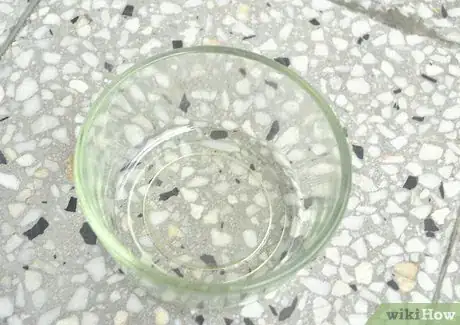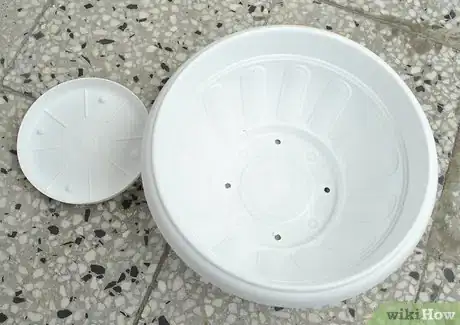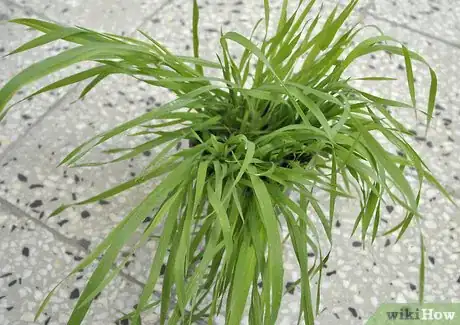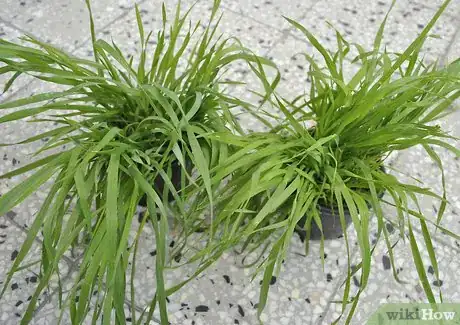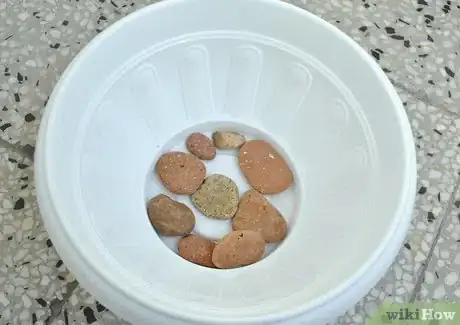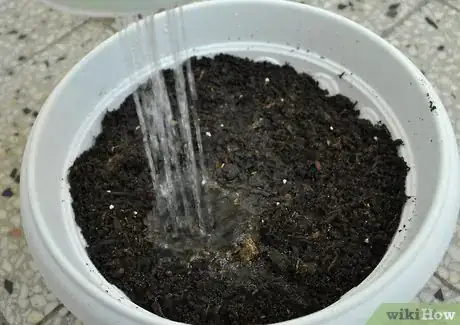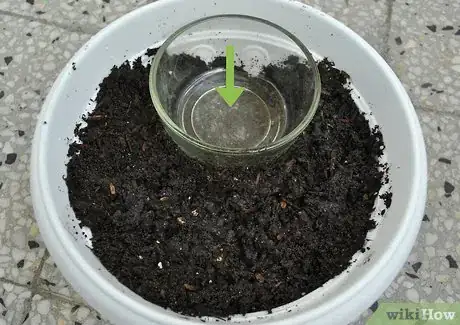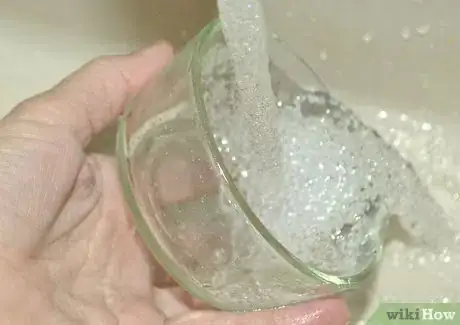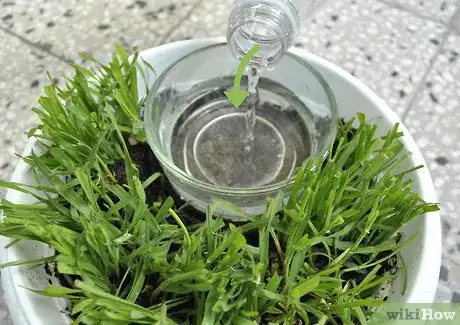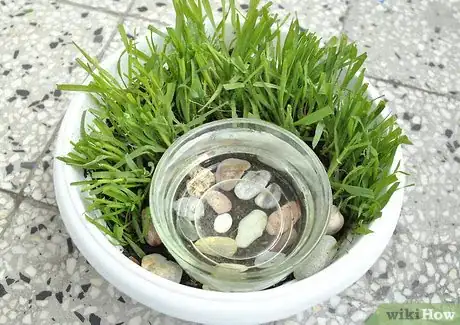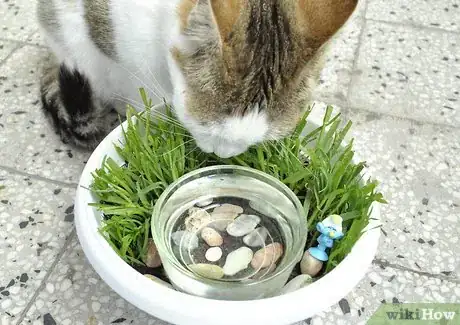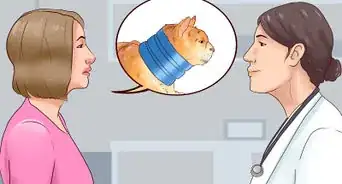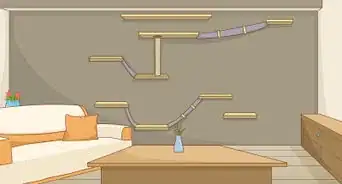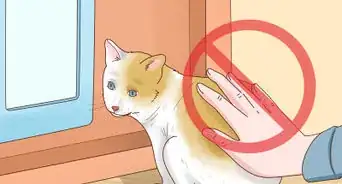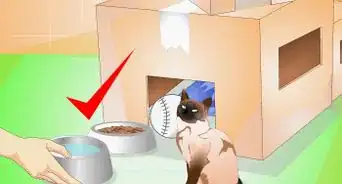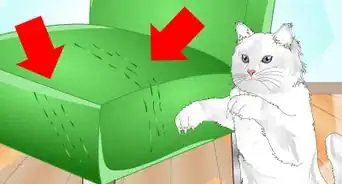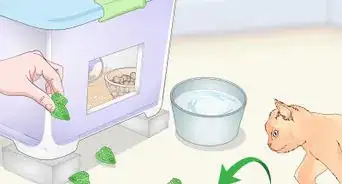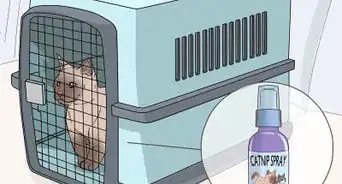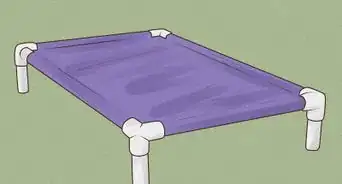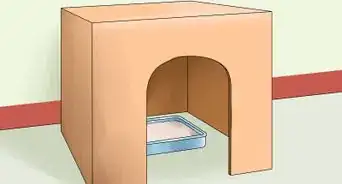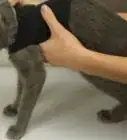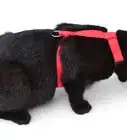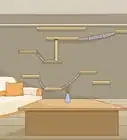This article was co-authored by wikiHow Staff. Our trained team of editors and researchers validate articles for accuracy and comprehensiveness. wikiHow's Content Management Team carefully monitors the work from our editorial staff to ensure that each article is backed by trusted research and meets our high quality standards.
There are 12 references cited in this article, which can be found at the bottom of the page.
This article has been viewed 24,240 times.
Learn more...
Have you ever wanted to create a mini garden for you cat, filled with cat grass and catnip, but couldn't due to space? Why not combine it with your cat's water dish? A cat water bowl planter is a mini cat garden with a water dish set into it. It looks fancy, but it is easy to create. Remember to water it regularly and change the cat's water daily, however!
Steps
Getting Started
-
1Choose a small bowl for the water dish. You can use your cat's current water dish, or you can buy a new one. You can use a small dish from the cat section of a pet store, or you can use another small glass or ceramic dish instead.
-
2Choose a low bowl or planter to use as a base. It needs to be wider than your cat's water dish and a little bit taller. It also needs to be tall enough that your cat can still reach into it while drinking water. Keep in mind that most cats like to crouch low to the ground while drinking water.
- It is highly recommended that you use a planter with a drainage hole at the bottom. If your planter does not have a drainage hole, your plants have increased chances of getting root rot and dying.
Advertisement -
3Choose some cat-safe plants. Cat grass is an excellent choice. It is easy to take care of and many cats like to munch on it. Catnip is another great choice, but mind your cat's behavior around the plant! Every cat reacts to catnip differently. If your cat tends to roll around in catnip, you might want to stick with cat grass, or you might end up with soil and water all over your floor!
- If you choose catnip, your planter will need to have a drainage hole. Catnip requires well-draining soil.[1] Even though there are things you can do to help a solid-bottomed planter to have more drainage, it is not enough for catnip.
-
4Buy the right amount of plants. It would be easier to buy young plants than to start them from seeds. Your kitty also won't have to wait as long! How many plants you get depends on how much space you have between the two bowls. Place the water dish into the planter and move it so that the edges touch. Note how much space you have left in the crescent shape between the two bowls.
- You can buy catnip and cat grass in pet stores and nurseries.
Planting Your Garden
-
1Prep your planter. If your planter has a drainage hole at the bottom, place a coffee filter, a piece of broken pottery, or a scrap of fine, mesh screening over it. This will help trap the dirt and keep it from falling out while allowing the water to drain.[2] If your planter does not have a drainage hole, do the following:
- Spread a layer of pebbles, stones or pumice across the bottom. The excess water will drain into this layer and help prevent root rot.[3]
- Consider adding some activated charcoal as well. Activated charcoal has antimicrobial properties and will help keep rot at bay.[4]
- Add a thin layer of mesh screen or landscaping cloth on top. This will keep the soil from falling into the pebbles.[5]
-
2Fill your planter with soil and water it.[6] Keep watering it until water starts to seep out of the drainage hole. You want the soil to be damp and spongy, but not soaking. If it starts to look like mud, you used too much water. Let the excess water drain out, then press down on it to drain the excess out.
- If your planter does not have a drainage hole, prepare the soil in a separate contain that does have a drainage hole.
-
3Insert the water dish.[7] Nestle the water dish in the corner of your planter, about halfway down. You want some of the water dish to be sticking out over the top of the soil. This will prevent dirt from falling into the water. Try to get the water dish close to the edge of the planter so that you have a crescent shape in the dirt.
-
4Dig holes for the plants. Carefully pull the plants out of their containers. Set them down on the soil around the water dish. Once you are happy with the arrangement, use a spoon or small trowel to dig holes into the soil.[8]
- If you decided to start the plants from seeds, dig holes in the soil at the depth specified on the seed packet.
-
5
Adding the Finishing Touches
-
1Take out the water dish and clean it. Even though the water dish was partially sticking out of the soil, there's a good chance that some soil still got into it. Take the dish out of the soil now, and wash it.
-
2Place the water dish back into the planter and fill it with water. Remember to empty and refill the water dish each day. Cats can be very picky animals, and they will not drink water that is old, dirty, or not fresh.[11]
-
3Consider adding some decorative stones. Spread a thin layer of colorful stones across the soil. Not only will this hide the soil and add a hint of color, but it will also help keep the surrounding area clean.[12]
-
4Consider adding a small figurine. This won't do much for your cat's enjoyment of his or her new water dish planter, but it can make the whole arrangement look more charming. Consider using a small fairy garden figurine that has a spike in the bottom. This will keep your cat from knocking it over.[13]
- Your cat may not appreciate this figurine. If you notice that your cat keeps trying to pull it out, simply take it away and put it in another flower pot.
Warnings
- Do not over water your plants. If you water them too much, the soil will become waterlogged. The roots will rot and the plants will die.[21]⧼thumbs_response⧽
- When purchasing catnip or cat grass, especially from the nursery, ensure that it is organic and pesticide-free. There is a high chance that your cat will nibble on it, and pesticides can make him or her very sick.[22]⧼thumbs_response⧽
- Some cats can become aggressive after being exposed to catnip.[23]⧼thumbs_response⧽
Things You'll Need
- Low planter
- Water dish for cats
- Soil
- Catnip and/or cat grass
References
- ↑ http://herbgardening.com/growingcatnip.htm
- ↑ https://extension.illinois.edu/containergardening/choosing_drainage.cfm
- ↑ http://pistilsnursery.com/how-to-plant-in-a-pot-without-drainage-holes/
- ↑ http://pistilsnursery.com/how-to-plant-in-a-pot-without-drainage-holes/
- ↑ http://www.bhg.com/gardening/container/basics/how-should-i-plant-in-a-container-with-no-holes/
- ↑ http://www.thehappierhomemaker.com/2016/06/cat-friendly-water-bowl-planter/
- ↑ http://www.thehappierhomemaker.com/2016/06/cat-friendly-water-bowl-planter/
- ↑ http://theantijunecleaver.com/2016/03/make-diy-indoor-cat-garden/
- ↑ http://herbgardening.com/growingcatnip.htm
- ↑ http://www.petmd.com/cat/care/evr_ct_how-to-grow-cat-grass
- ↑ http://www.catbehaviorassociates.com/how-appealing-is-your-cats-water/
- ↑ http://theantijunecleaver.com/2016/03/make-diy-indoor-cat-garden/
- ↑ http://theantijunecleaver.com/2016/03/make-diy-indoor-cat-garden/
- ↑ http://herbgardening.com/growingcatnip.htm
- ↑ http://www.humanesociety.org/news/magazines/2012/01-02/how_does_your_cat_grass_grow.html
- ↑ http://pistilsnursery.com/how-to-plant-in-a-pot-without-drainage-holes/
- ↑ https://extension.illinois.edu/containergardening/choosing_drainage.cfm
- ↑ http://www.cat-world.com.au/all-about-catnip
- ↑ http://www.hillspet.com/en/us/cat-care/nutrition-feeding/drinking-water-can-save-your-cats-bladder
- ↑ http://www.hillspet.com/en/us/cat-care/nutrition-feeding/drinking-water-can-save-your-cats-bladder
- ↑ https://extension.illinois.edu/containergardening/choosing_drainage.cfm
- ↑ http://www.catbehaviorassociates.com/helpful-facts-about-catnip/
- ↑ http://www.catbehaviorassociates.com/helpful-facts-about-catnip/
